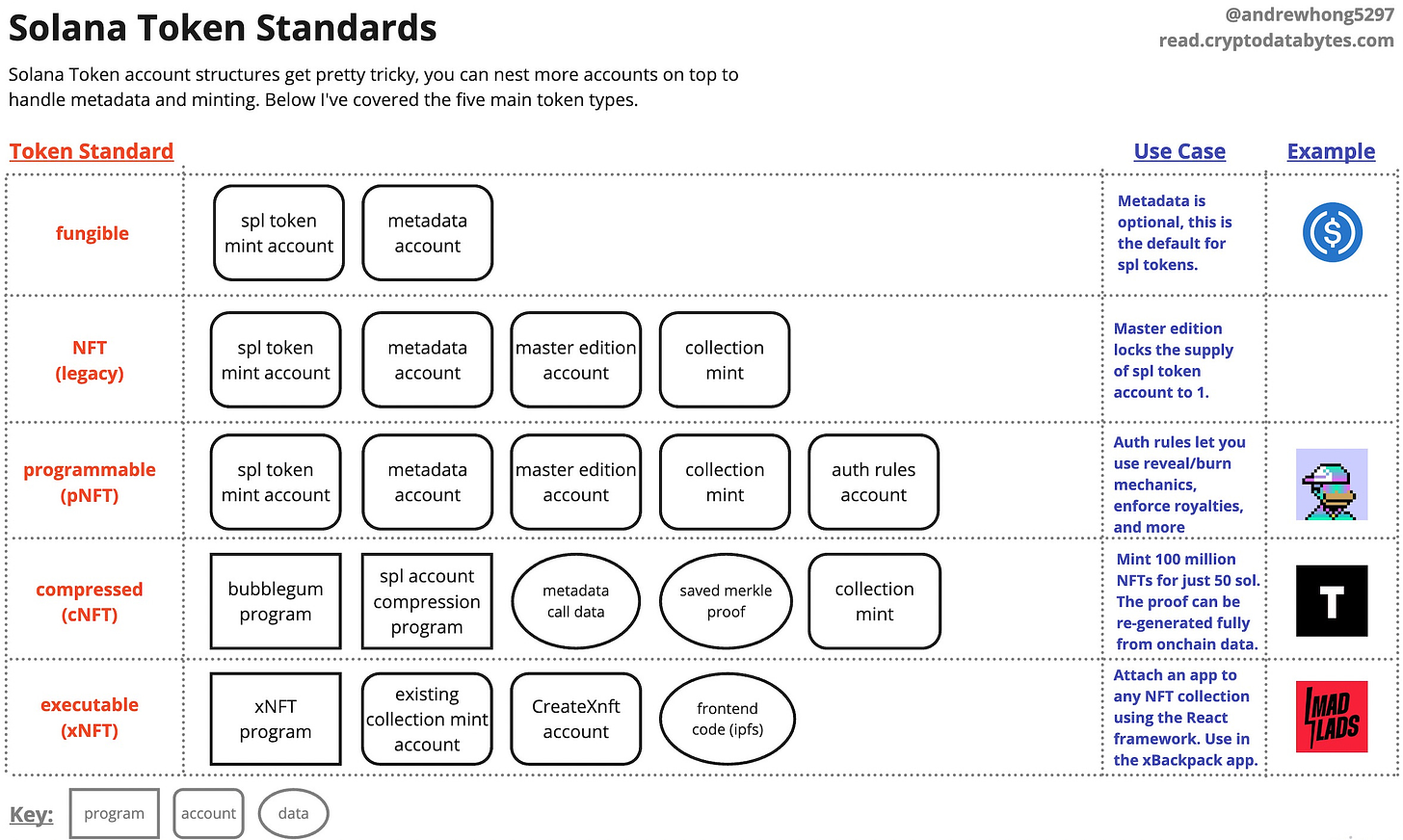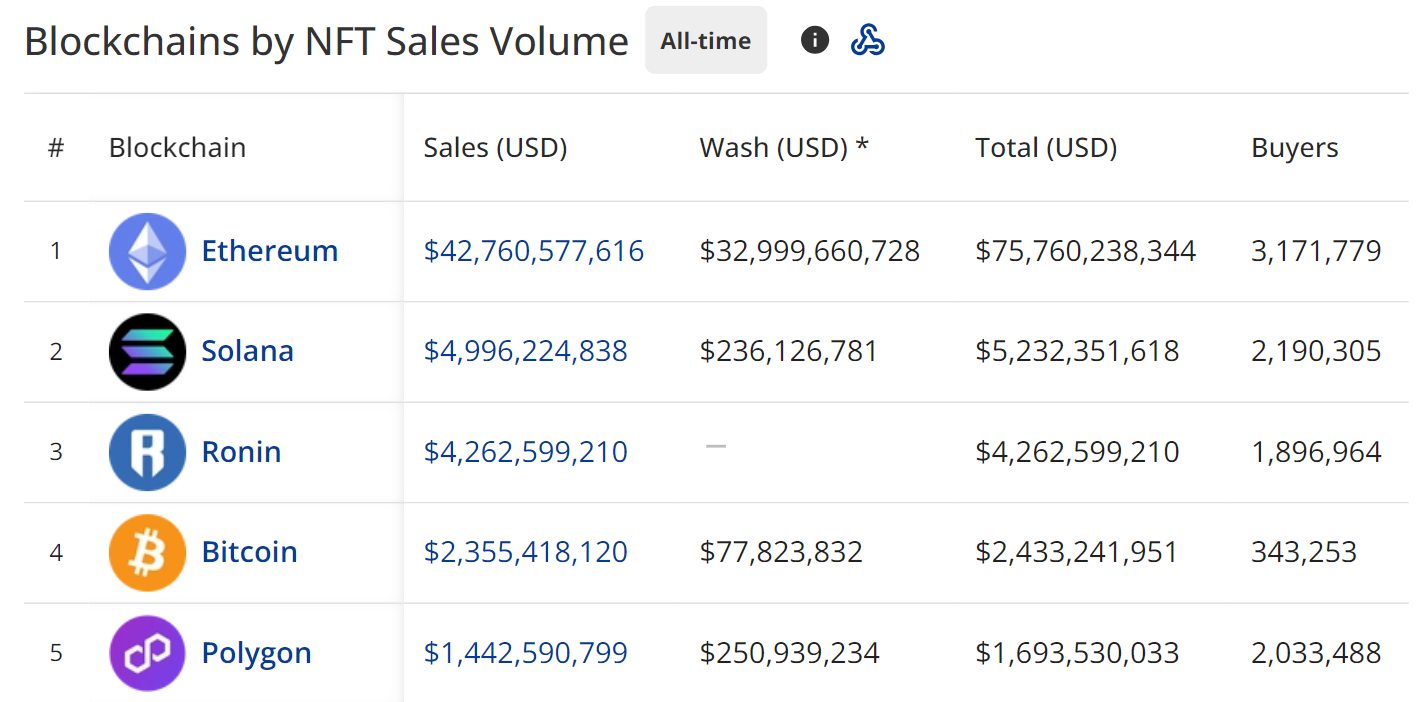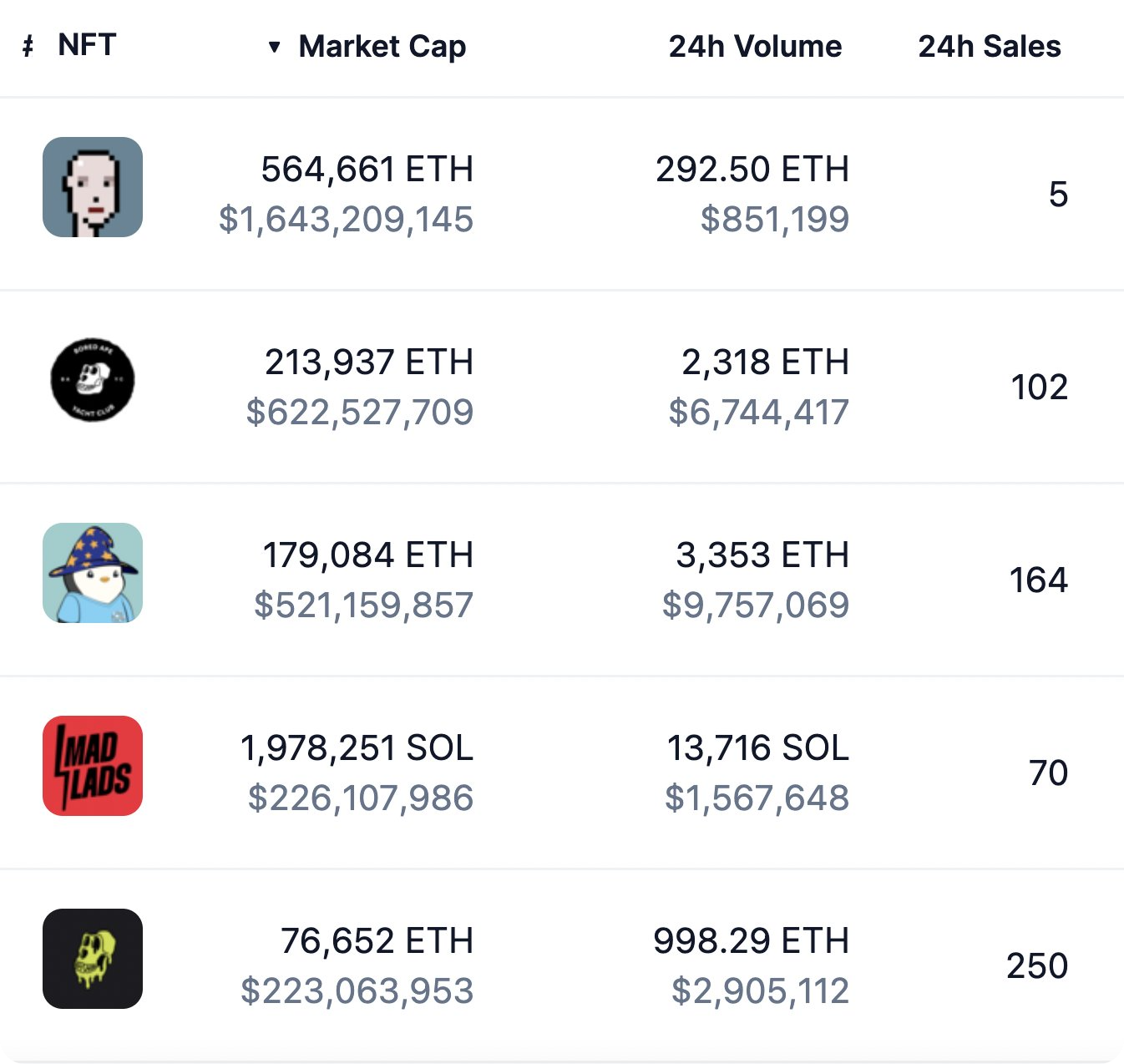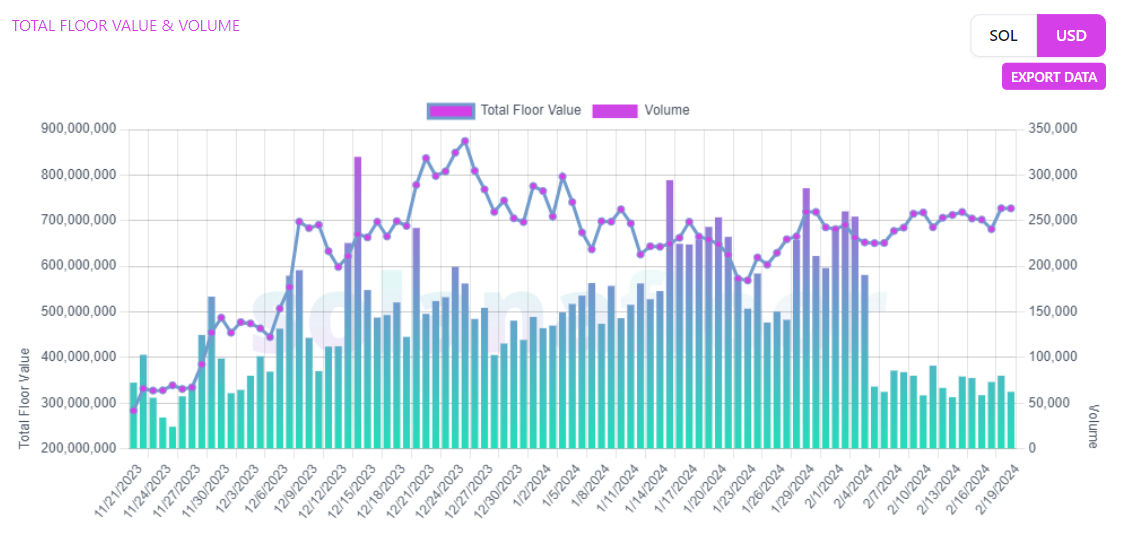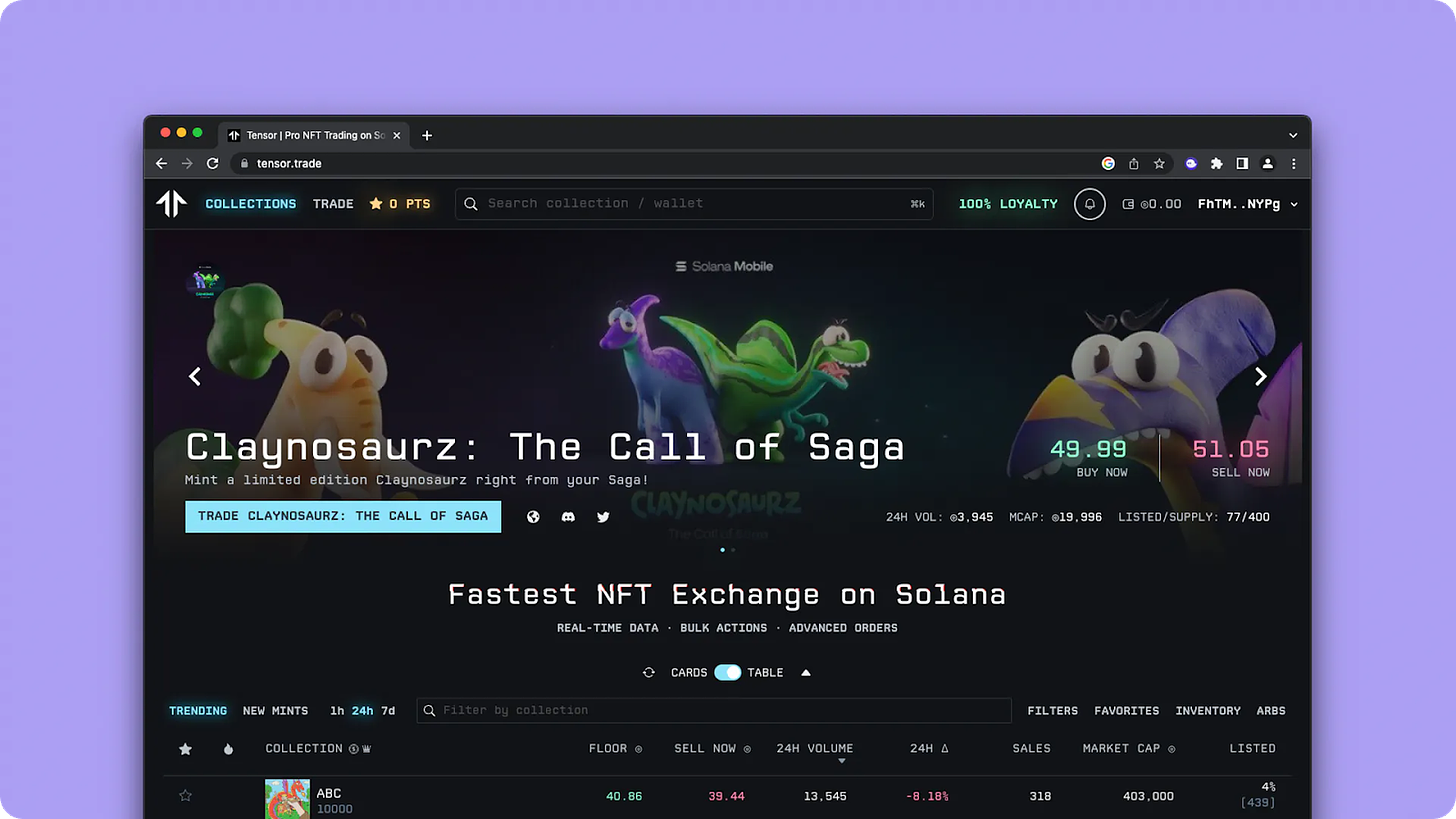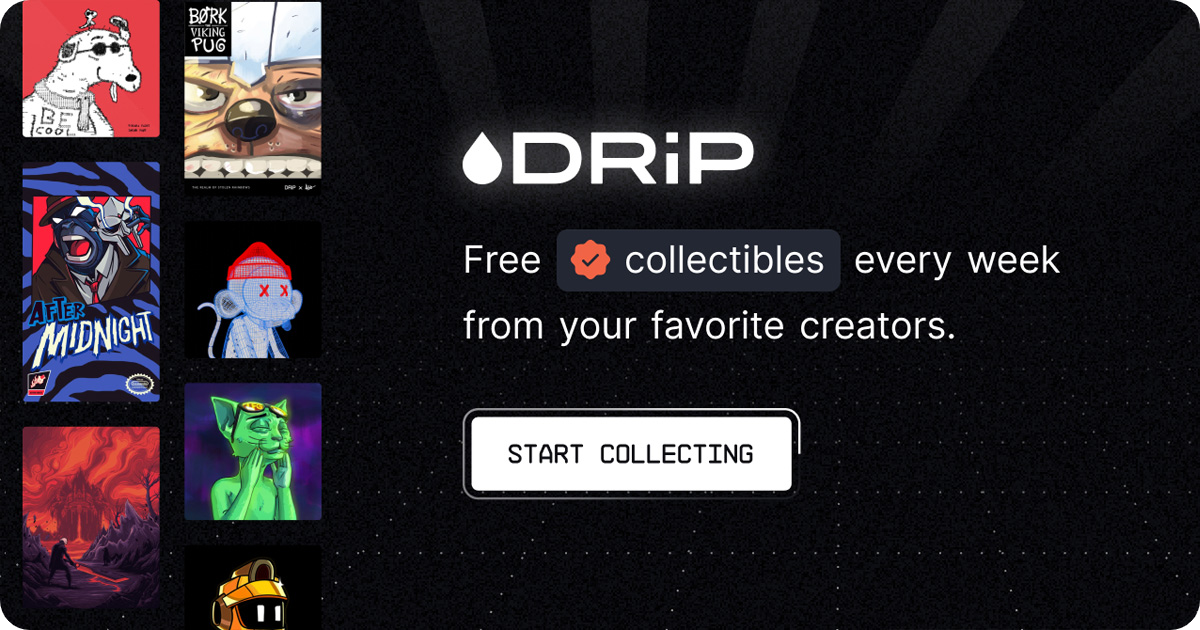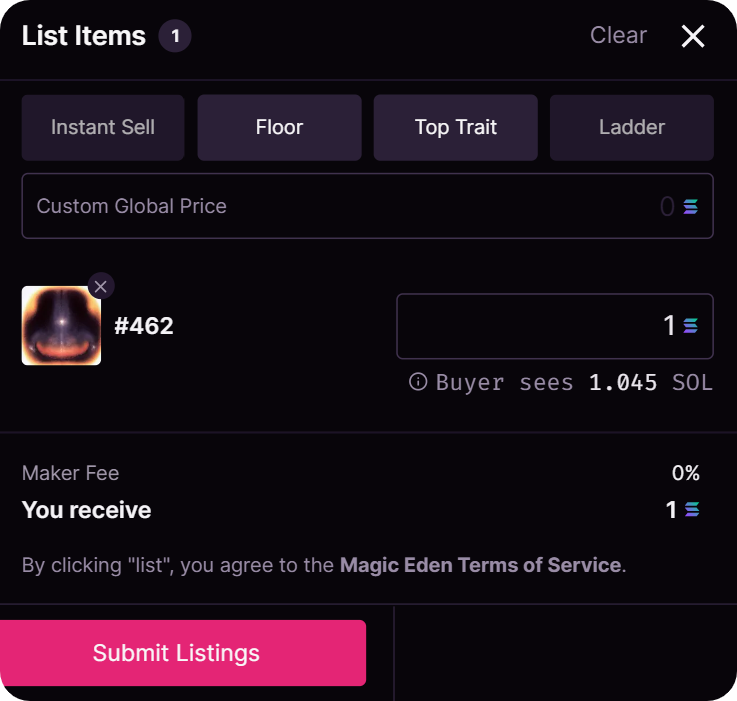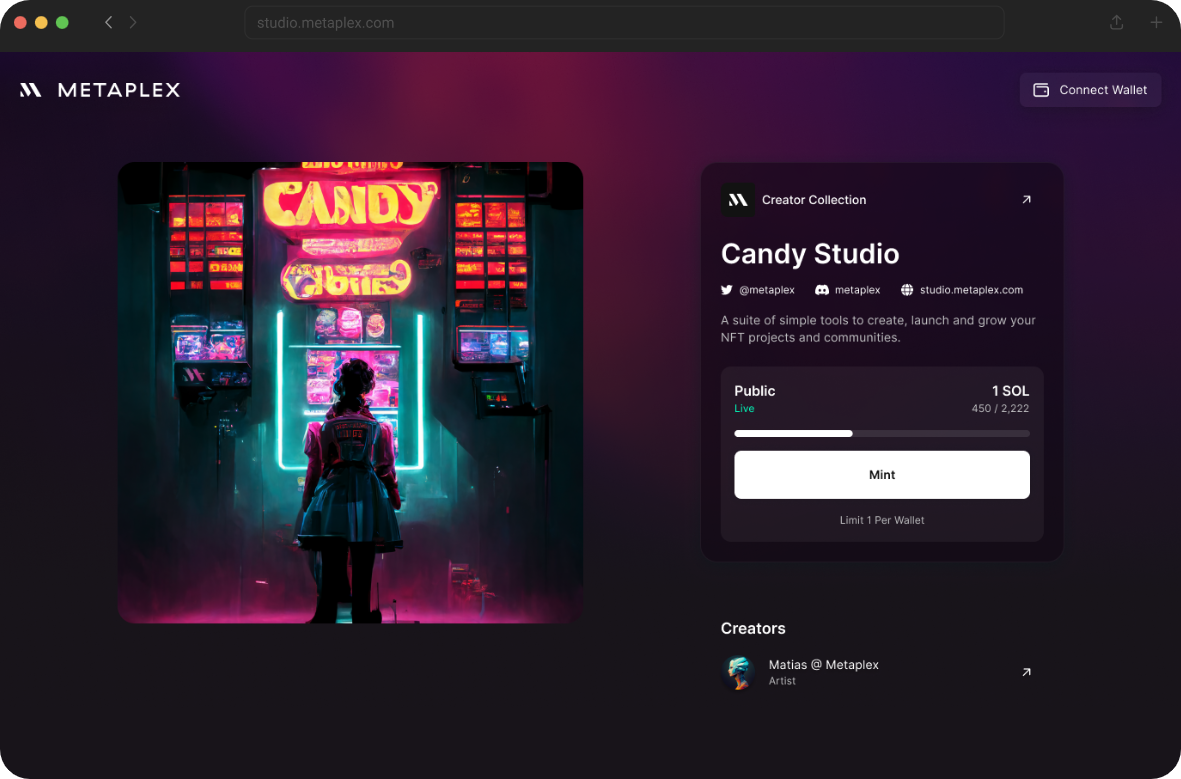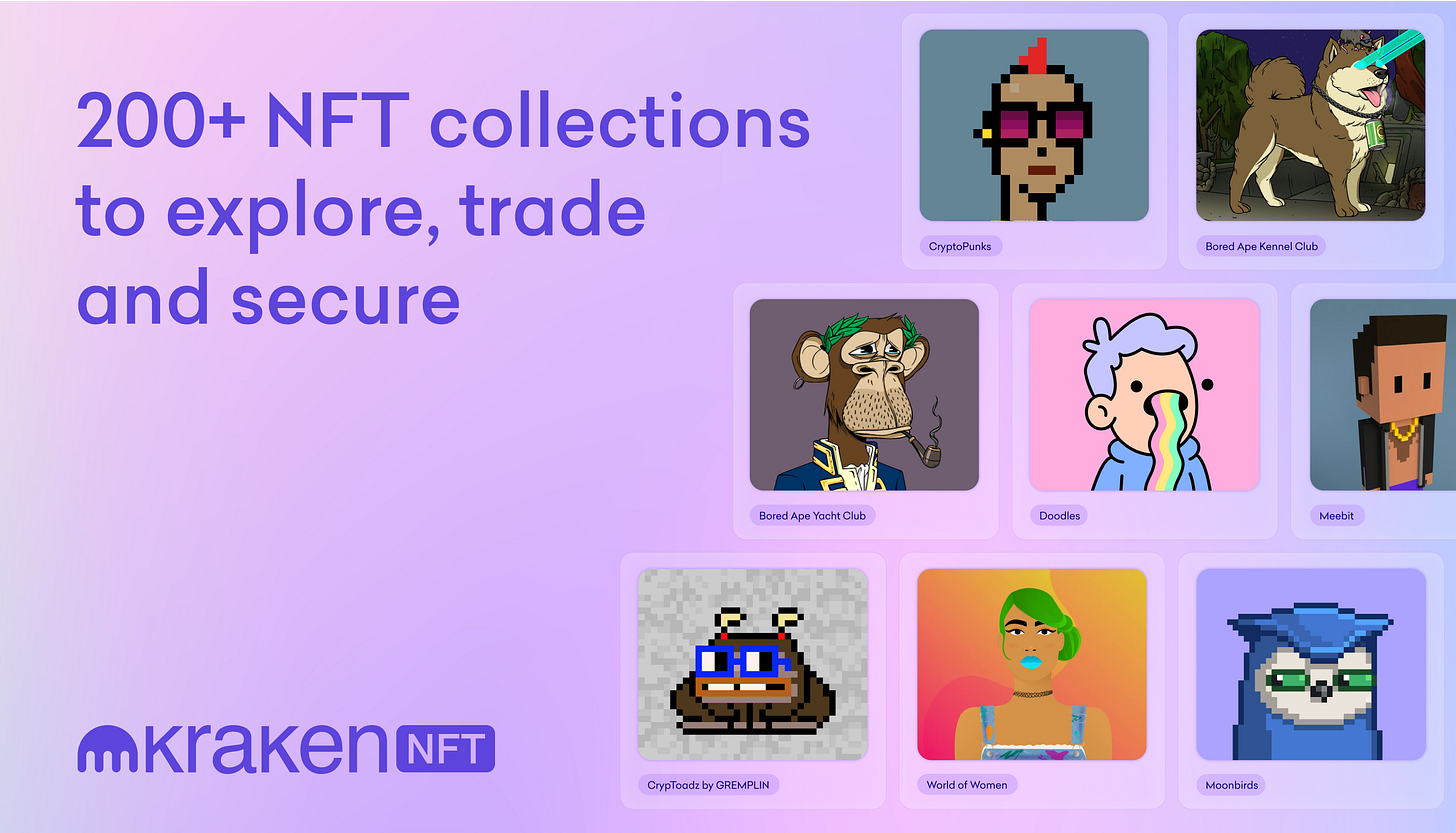Metaversal is a Bankless newsletter for weekly level-ups on NFTs and the onchain frontier
Dear Bankless Nation,
A couple months back, I wrote about how 2024 was shaping up to be big for the Ethereum, Bitcoin, and Solana NFT scenes.
And while I’ve written extensively on the Ethereum NFT ecosystem and a good bit on Bitcoin’s, I’ve yet to do a primer on the Solana NFT space.
So with today’s post, let’s change that!
Accordingly, here’s a quick beginner’s guide that will walk you through the basics of Solana NFT standards, top collections, and how to get started 👇
-WMP
👉 Kraken NFT is built for secure NFT trading ✨
Intro: Like Ethereum, Solana is a smart contract blockchain that facilitates general applications, from DeFi to NFT use cases and beyond. Where Ethereum and Solana fundamentally differ is in their design philosophies.
Monolithic: Ethereum employs a “modular” approach, balancing its decentralization, security, and scalability needs via external data availability (DA) and Layer 2 (L2) scaling solutions. In contrast, Solana uses a “monolithic” approach in handling all its execution, data, and security demands. There are tradeoffs both ways, with Solana’s main differentiator being how it optimizes for speed within a single shared global state.
Ripe for NFTs: Because of Solana’s architectural choices, the chain is designed to support many 1,000s of transactions per second (TPS). Additionally, Solana transactions don’t have “gas prices” as the network hasn’t introduced usage-based pricing yet, so currently there is a fixed-rate cost of 0.000005 SOL per Solana transaction. This speed and affordability have fostered fertile ground for the network’s rising NFT scene.
Bankless Citizens who completed the Jito quest in our Airdrop Hunter tool just earned $15k or more 🏹
Don’t miss the next one 👇
Just like Ethereum has the ERC-721 and ERC-1155 standards and Bitcoin has Ordinals for NFTs, Solana has its own unique NFT standards. I recommend Part 3 of Andrew Hong’s “Solana Analytics Starter Guide” series if you want to dive in deeper here, but the basics are as follows:
-
Legacy: Solana’s original NFT standard was developed by Metaplex, a creator studio platform, and built as an extension of Solana’s SPL standard, which is roughly akin to Ethereum’s fungible ERC-20 standard. Example project: Claynosaurz.
-
pNFTs: Programmable NFTs, also developed by the Metaplex team, is a token standard that introduces enforced royalties, rules, and more for Solana NFTs. Example project: Solana Monkey Business.
-
cNFTs: Compressed NFTs make use of Solana’s state compression upgrade to squeeze down lots of data efficiently into onchain storage. This capability allows projects to save big on mint costs. For example, it currently costs 1 SOL to mint 2 million cNFTs. Example project: Tensorians.
-
xNFTs: Executable NFTs aren’t quite a token standard on their own but do allow projects to attach apps to their collections. For instance, the Backpack team used the xNFT system to offer a Mad Lads staking program within the Backpack wallet.
An NFT major: Over 192 million NFTs have been minted on Solana to date, putting it behind only Polygon and Ethereum right now when it comes to total NFTs created so far. As of February 2024, Solana had also facilitated ~$5 billion worth of NFT trading volume, making it the 2nd-most active chain for NFT trades behind only Ethereum currently.
Top collection: While Solana doesn’t presently boast as many major NFT collections as Ethereum does, it has its own giants. The largest collection on the network today is Backpack’s aforementioned Mad Lads project, which is trading around a 206 SOL floor price (~$22k) and is presently the 4th-largest NFT collection by market cap behind only CryptoPunks, Bored Apes, and Pudgy Penguins on Ethereum. In ascending to this height, Mad Lads holders have now notably become airdrop targets for new multichain projects alongside Pudgy Penguins and Bad Kids on Cosmos.
Other top collections: While Mad Lads are out of many people’s price range, there are plenty of other collections on Solana that are less expensive and that have gained considerable traction too. Some current standouts include:
You’ll need to set up a Solana wallet and acquire some SOL to buy Solana NFTs, just as you need ETH for Ethereum NFTs. The easiest way to get SOL is to buy some from your crypto exchange of choice, e.g. Coinbase, and then transfer it out to a personal wallet.
As for making your first wallet, you can’t go wrong with Phantom, Magic Eden Wallet, or Backpack. Phantom and Magic Eden both notably offer multichain support, e.g. Ethereum and Polygon wallets, while Backpack is optimized for interactive xNFT experiences.
Once you have some SOL in hand, you’re ready to start minting directly from NFT drops, e.g. on Metaplex, and browsing Solana’s NFT marketplaces. The most popular marketplaces today are Tensor and Magic Eden. Here, the purchasing experience will be similar to what you’re used to on Ethereum: select an NFT you want, click the “Buy” option, and approve the transaction with your wallet to finish up.
Additionally, Solana also has free mints that allow you to collect NFTs at no cost besides transaction fees and any associated platform fees. For example, one early popular platform here is DRiP, which lets users collect free limited-edition pieces from their preferred creators every week.
If you have a Solana NFT you want to flip or move on from, you can use Tensor or Magic Eden to list your NFT for sale. Again, the experience will be close to what you’re used to on Ethereum marketplaces. Select the NFT you want to sell, click the “List” option, input your desired sale parameters, and then approve the listing with your wallet.
If you’re interested in creating your own NFTs, consider checking out Metaplex Studio, which makes it possible to release 1/1s, open editions, and collections on Solana. Unlike Zora, Manifold, and Highlight on Ethereum, I haven’t personally tried Metaplex on the creator side of things yet, but it’s unquestionably the leading choice in the Solana NFT scene today.
Solana has joined the ranks of Ethereum and Bitcoin when it comes to the cryptoeconomy’s biggest NFT ecosystems. To be sure, Ethereum’s NFT scene is deeper and wider, especially if you count L2s, and with more varied and more teeming niches spanning from conceptual art to real world assets. Yet Solana’s NFT ecosystem has seemingly reached escape velocity, so it’s poised to grow deeper and wider in time as well.
What happens going forward, then? The scenario that seems most likely to me over the next few years is that Ethereum remains dominant in NFTs but that all the majors, including Bitcoin, Solana, and perhaps even Cosmos, experience significant growth around NFTs in parallel. That said, I think it’s worth experimenting with all these networks right now to prepare for what’s to come!
Kraken NFT is one of the most secure, easy-to-use and dynamic marketplaces available. Active and new collectors alike benefit from zero gas fees, multi-chain access, payment flexibility with fiat or 200+ cryptocurrencies, and built-in rarity rankings. Learn more at Kraken.com/nft
👉 Visit Kraken.com to learn more and open an account today.
Not financial or tax advice. This newsletter is strictly educational and is not investment advice or a solicitation to buy or sell any assets or to make any financial decisions. This newsletter is not tax advice. Talk to your accountant. Do your own research.
Disclosure. From time-to-time I may add links in this newsletter to products I use. I may receive commission if you make a purchase through one of these links. Additionally, the Bankless writers hold crypto assets. See our investment disclosures here.


